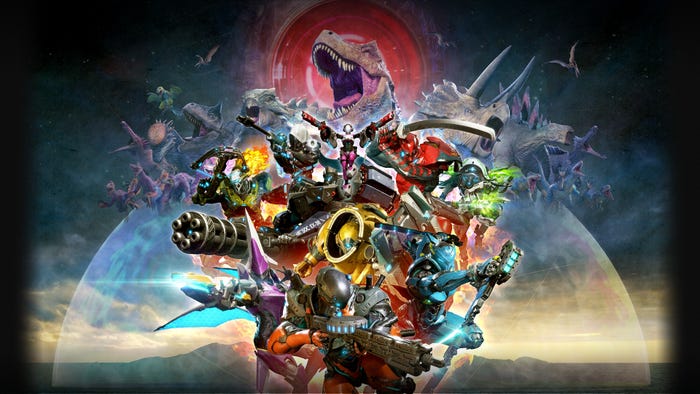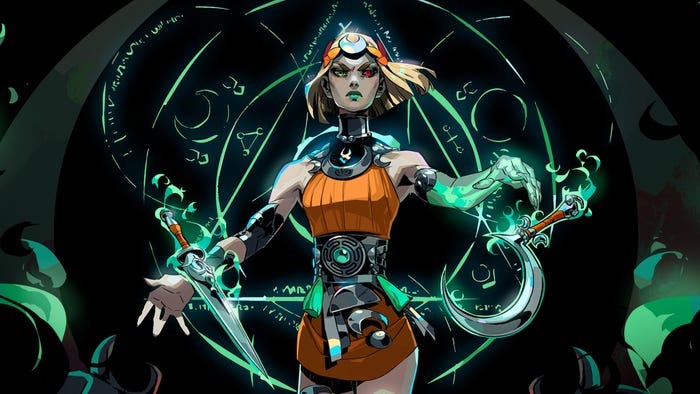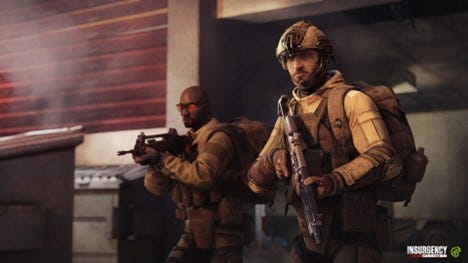
Featured Blog | This community-written post highlights the best of what the game industry has to offer. Read more like it on the Game Developer Blogs.
Post-mortem for a DLC: United Front
I am an indie games developer who explored war themes by taking an absurdist approach in the game's design. This is a post mortem for a DLC inspired by my family's roots as immigrants.

My father was born in China in January 1945 during the last year of World War 2. For 8 years prior to his birth, his father witnessed the country torn apart by wartime fighting, as untold thousands starved from famine and families were separated by the frontlines drawn by military generals. His father, my grandfather, was a doctor who fled warzones after warzones, taking his family on a series of forced migrations. While the rest of the world rested and recovered from World War 2, the Chinese Civil War resumed. Once again, my grandfather took his family and fled south to escape the war.

The extent of Japanese occupation of China in 1940.
My father was a young child when his father took him and his siblings out of Canton and into Vietnam. There they settled until the war followed and were forced to move ever further south. By the time Americans became aware of the country of Vietnam, my father had matured into a young man, an able body ready to be thrown into another war.
When the war was over, his sister, my aunt, fled to the United States, another forced migration. Eventually my aunt was able to bring my father to the United States in the late 80s. At the end of a long chain of migration, I was born in the United States.
I never experienced any of the war. I only know of the tales that my father told me and of the tales that my grandfather told my father. They were men who lived through decades of war, who journeyed thousands of miles, whose memories were passed down from one generation to the next.
Finding a Space
When I developed Skirmish Line, my goal was to build my own variant of a popular World War 2 flash game, Mud and Blood 2. Where Mud and Blood 2 was a game featuring the western Allies fighting the Germans in Western Europe, Skirmish Line was a game featuring the western Allies fighting the Japanese in the Pacific. I wanted to build a bigger game with expanded mechanics and a larger roster of options for the player.
In a one line description, Skirmish Line is a Tarantino film style tower defense game. This was a game featuring fountains of blood, bodies exploding, and language filled with war time slurs and slang. Thanks to the art of Clark Bint, a comic artist, the game’s art took on a gory, gritty cartoon violence feel in the form of a graphic novel.
Clark and I pushed back and forth on various bits of sprite work. The goal was not to glamorize war nor was it to showcase the horrors of war. Skirmish Line at its heart is an absurdist work about the absurdity of war. How effectively we managed this is of course highly subjective. There is always the risk that your audience does not understand your work, but that is no excuse to dilute your work.
Films were a great source of inspiration for ideas. Film makers from different countries tend to portray the war differently, each offering not only its historical interpretation but also stylistic approaches. Many eastern film makers often took an absurdist approach that worked well with the core DNA of my game.

Inspiration for the suicide truck enemy unit.
Themes
The player never wins.
Skirmish Line is a game about surviving an unending onslaught. The game builds a natural narrative arc: a rising action as the player builds up their defenses, a climax where the player’s defenses are crushed by an overwhelming attack, and a falling action as the player struggles to survive just a few more wave counts. Each game is a self-contained narrative.
I once had a player ask for a win condition, a purely symbolic one where the player “wins” the game at wave 100 but are allowed to continue if they had desired. This player had read the short little biographies on his soldiers and wanted to send them home after a good long fight. There was something fundamentally disturbing about the notion that the poor farmboy from Kansas turned war hero would never return to their home.
On the topic of Medics.
One player asked for the player’s Medics to be able to shoot enemy soldiers, citing historical records. Another asked for enemy Medics that would attempt to revive enemy soldiers, citing gameplay reasons. My response to both has always been that the player plays the role of the good soldier archetype. The player’s Medics are conscientious objectors, but more significantly, the player roleplays a commander who follows the Geneva Convention. An important distinction that separates the player from the enemy is that the bad guys do not follow the code of conduct.
Together We Stand.
The player commands a squad of soldiers from all across the globe. They command Americans, Australians, Chinese, Indians, South Africans, and others in a fight against a homogeneous Imperial Japanese force. While the core selling point of Skirmish Line was always the appeal to the American participation in the war in the Pacific, the participation of so many others was a major point we pushed across. The involvement of soldiers from across the globe mattered, but we had to sell the game as a fight between Americans and the Imperial Japanese because that remains the popular zeitgeist.
Exploring Darker Themes
United Front was a DLC for Skirmish Line featuring the war in China. Often considered the forgotten front, this was something I had a personal interest in. Selling this idea as an independent game was not a viable option. Where the base game’s setting of the Pacific was easily recognizable, the war in China was esoteric history despite its massive ramifications. Working on this DLC was not only an opportunity to explore new mechanics and themes, it was an opportunity to share with the world an forgotten piece of history.
United Front is an expansion of the game that delves into a much darker history. The DLC’s feature list includes enemies using chemical weapons, military secret police forcing slave laborers into battle, and conscripts under the command of the player who lack the gusto and machoism of the Americans. An extension on the theme of the world coming together, the core mechanic introduced is the option for the player to cycle between equipment from different foreign powers, featuring four aid packages from the Americans, the British, the Soviet Union, and the Germans.

Foreign aid package mechanic featuring 4 distinct set of equipment for the player to choose from.
For many players, the notion of German equipment in the Chinese army is completely unheard of. Here was a rarely spoken bit of history - that Germany was at one point a supporter of the Chinese in their war against Imperial Japan. This was forgotten history in the sense that it became ideal to disassociate with Germany for post war political purposes. Nonetheless, massive amounts of the war effort in China were attributable to Germany aid, particularly on the part of the German equipped Chinese divisions who handled much of the early fighting in the war.
In theme with its absurdist take on war, we introduce buffalo carts carrying heavy weapons and supplies. Weaponized carts driven by buffalos is of course unrealistic, but the Chinese buffalo is an iconic symbol of agriculture in China. Its inclusion in the game mirrors the military use of pack animals to transport heavy equipment and supplies. This is contrasted against the introduction of enemy half-tracks carrying Japanese soldiers into battle to highlight the desperate situation of the Chinese forces.

Heavy machine guns on a wooden cart pulled by a water buffalo engaging a mechanized Japanese force. Burma 1944 (colorized).
We also revisit the theme of Medics in war. Where in Skirmish Line the player plays the role of the good soldier, in United Front the player plays the role of the desperate soldier. This was a war between an industrialized power using its weapons of war to crush a mostly agrarian nation. Here it became fitting to let the player’s Medics shoot their weapons because this was a front where the Geneva Convention could not reasonably be respected out of sheer desperation.
Players are given access to Martyrs, suicidal units that throw Molotovs cocktails and explode when in contact with enemy units. The topic of suicide bombing is of course a touchy topic. Yet, suicide bombing became a tactic of desperation in the war in China and those who gave up their lives were immortalized by history for their sacrifice. In the game, Martyrs are selectively effective units, as their excessive use is often detrimental to the player’s own defense. The absurdity of Martyrs exploding and setting friendly units on fire discouraged their excessive use. Ultimately, this was how we chose to navigate the fine line between endorsing suicidal bombing and recognizing the sacrifice of soldiers in a desperate situation.
Conclusions
United Front was as much a personal project as it was an extension of the mechanics of Skirmish Line. The development of both Skirmish Line and United Front was the end result of decades of history, of an identity forged from ordinary people living extraordinary lives, journeying across the globe. For many players, Skirmish Line and United Front will be nothing more than entertaining violence, which is entirely fine! After all, this is a game meant to be played for entertainment. As with the player who asked if they could ever “win” at the game, by asking that question, they are testimony to a tale passed between generations.
Read more about:
Featured BlogsAbout the Author(s)
You May Also Like













